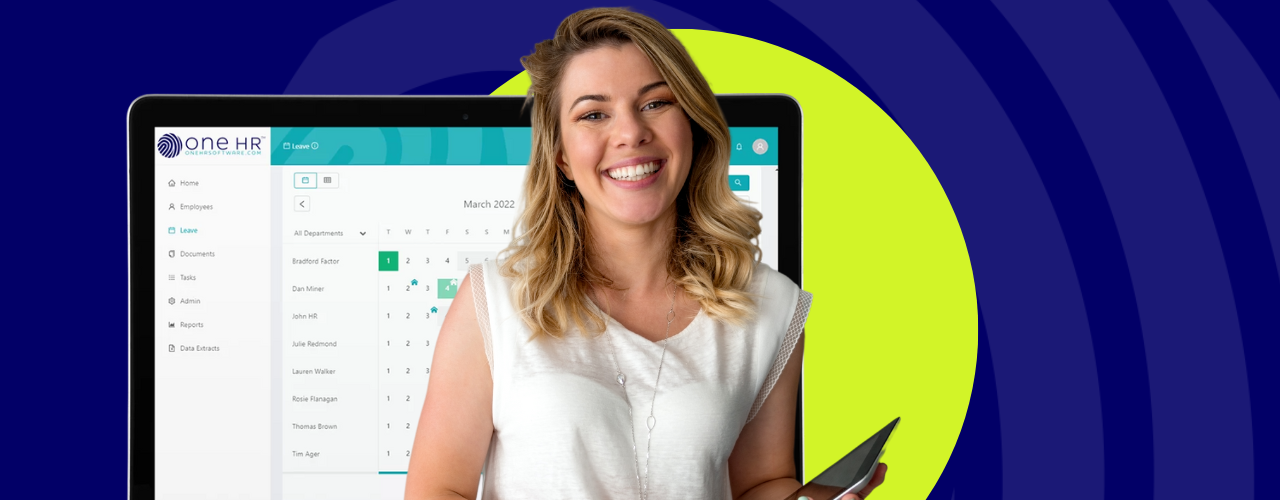Login
Your link will open in a new tab
If this has not happened, please click here
If this has not happened, please click here

Absence management can be challenging for many organisations, and effectively managing absence is crucial for maintaining productivity. Whether it’s due to illness, personal emergencies, or other reasons, employees may need to take time off work. In this guide, we will explore some essential tips for managing workplace absence, helping employers and managers maintain productivity, supporting their employees, and minimising disruption.
Establish a Clear Absence Policy:
Having a well-defined absence policy is essential for managing absence. This policy should outline the procedures for reporting absences, the required notice period, and any necessary documentation. Ensure that all employees are familiar with this policy, and consider making it easily accessible through an employee handbook on a cloud-based HR tool such as oneHR.
Encourage Communication and Early Reporting:
Encourage employees to communicate any potential absences as early as possible. This allows managers to plan and manage workloads accordingly. Establish clear channels of communication, using an absence management system will allow you to streamline the process. It’s important to create an open and supportive environment where employees feel comfortable discussing their absences.
Explore flexible working options:
Consider offering flexible work arrangements to accommodate unexpected absences or situations where employees may need time off. Options like remote working, flexible hours, or job-sharing can help minimise disruption while allowing employees to fulfil their personal obligations. Flexible work arrangements also contribute to employee satisfaction and work-life balance, promoting a positive workplace culture.
Cross-Train Employees:
Cross-training employees on multiple tasks or roles can be greatly beneficial in managing workplace absence. By ensuring that several individuals are capable of performing critical tasks, you can reduce the impact of an employee’s absence. Encourage knowledge sharing and provide opportunities for employees to develop new skills and expand their capabilities.
Maintain Accurate Attendance and Leave Records:
Maintaining accurate records of attendance and leave is vital for managing workplace absence. Use a centralised system or software like oneHR to track and document employee absences. This allows you to identify any patterns or recurring issues and address them proactively.
Foster a Healthy Work Environment:
Promoting a healthy work environment can help reduce the frequency of absences due to illness. Encourage a culture of well-being by offering wellness programs, providing ergonomic workstations, and emphasising the importance of work-life balance. Additionally, educate employees about healthy practices like hand hygiene, proper nutrition, and stress management techniques.
Support Employee Well-being:
Recognise that employees may require time off for personal or mental health reasons. Create a supportive environment where employees feel comfortable discussing such matters without fear of judgment. Demonstrating empathy and understanding can boost loyalty and encourage employees to seek help when needed.
Regularly Review and Adjust Policies:
Workplace dynamics and employee needs can change over time. Regularly review your absence management policies to ensure they remain effective and align with evolving circumstances. You should look to seek feedback from employees and managers to identify areas for improvement. Being adaptable and responsive to changes can help create a culture that supports employees’ well-being and reduces absences.
oneHR has been designed to streamline and simplify the process of managing absence in the workplace. Here’s how it can make the task easier:
Centralized Absence Tracking:
oneHR provides you with a centralised platform to record and track employee absences. It allows you to maintain a comprehensive record of absences, including details such as dates, reasons, and duration. This eliminates the need for manual record-keeping and reduces the chances of errors or data discrepancies.
Automated Absence Reporting:
On oneHR, employees can easily report their absences. They can submit requests and provide relevant details. This process saves time for both employees and managers, eliminating the need for paper-based forms or manual emails.
Real-Time Absence Visibility:
oneHR provides your business with real-time visibility into employee absences, enabling managers to quickly assess the overall impact and plan resource allocation accordingly. They can view absence patterns, identify potential issues, and take proactive measures to manage workload distribution or arrange for suitable replacements.
Leave Request Approval Workflow:
oneHR uses an email accompanied leave request approval workflow that streamlines the process of reviewing and approving absence requests. Managers receive email notifications and can review requests, check team availability, and make informed decisions within the leave and absence calendar. This streamlined workflow ensures consistency, reduces delays, and eliminates the risk of misplaced or forgotten requests.
Reporting and Analytics:
oneHR provides reporting and analytics capabilities, allowing managers and admins to generate absence-related reports effortlessly. These reports can include reasons for absence and insights into specific departments, teams or individuals. Having quick and easy access to this data helps identify trends, patterns, and areas requiring attention, enabling proactive measures to address absenteeism issues.
Contact the oneHR team today for a free demo and to discuss how we can help to support you in creating a winning absence management process.
Call: 0330 107 1037
Email: contact@onehrsoftware.com
Find us on Instagram: @oneHR_